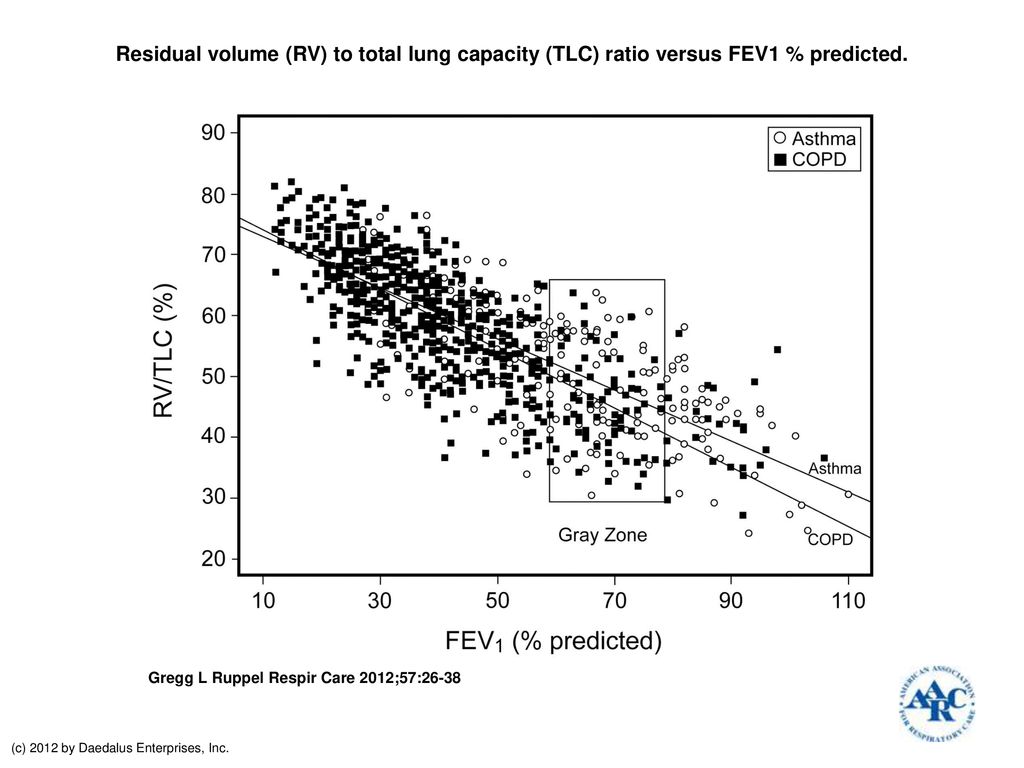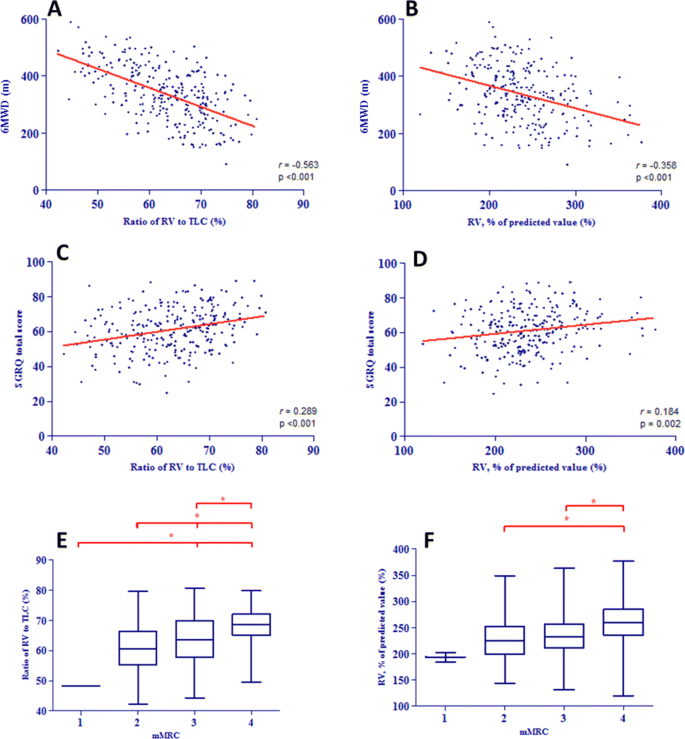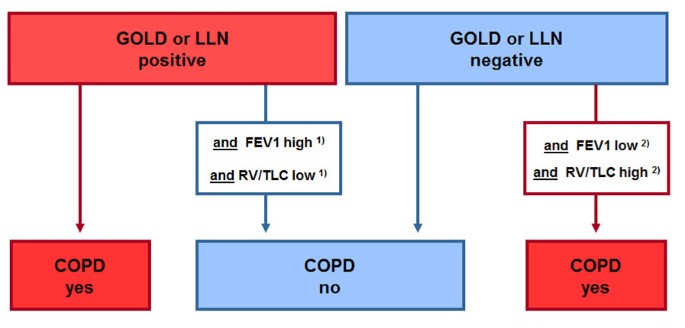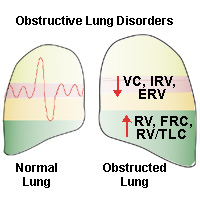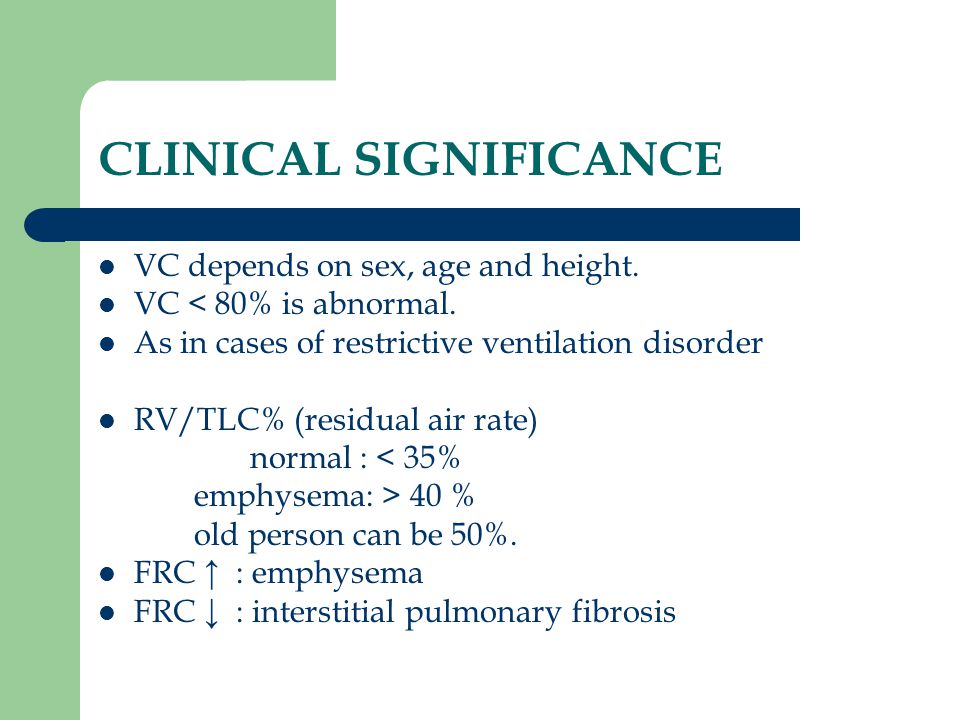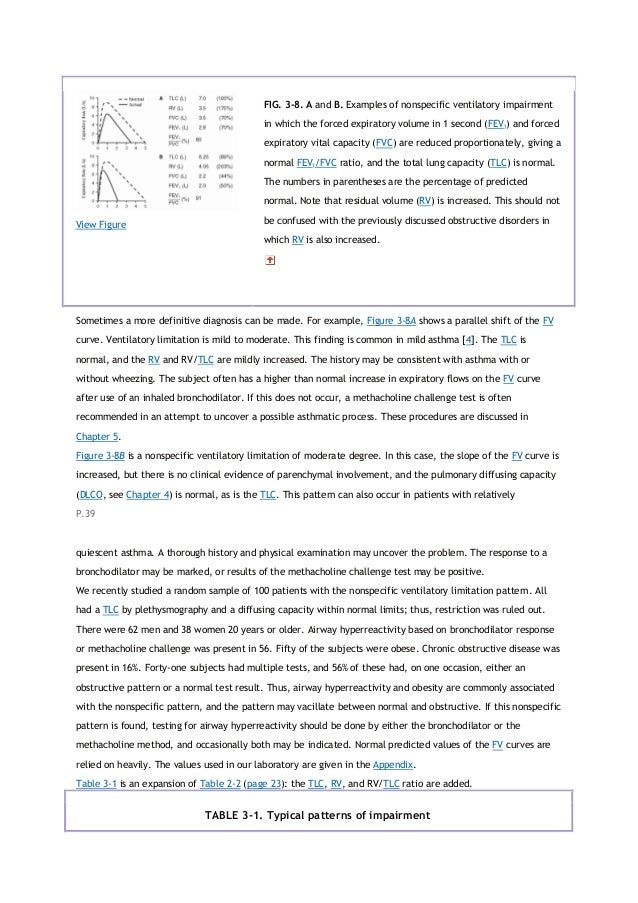Rv Tlc Ratio Emphysema

Residual volume rv is determined in healthy younger individuals by the competition between the strength of the expiratory muscles and compressibility of the chest wall.
Rv tlc ratio emphysema. Tlc 80 restrictive disease ats criteria for severity. Rv tlc ratio normal range. Severe step 5. Residual volume rv to total lung capacity tlc ratio versus fev 1 predicted.
Mild 60 70 di t d d t70 predicted. Moderately severe 50 predicted. 35 or predicted rv tlc 35 or predicted indicates air trapping. In each study age is the main coefficient describing the relationship between rv and tlc see text.
In severe emphysema particularly bullous emphysema the tlc can show a marked increase. Elevated rv and rv tlc ratio suggest air trapping with obstructive lung disease. While the criteria used to diagnose airway obstruction using fev1 fvc ratio and assess its severity using fev1 are uniformly recognized 5 35 the presence and severity of gas trapping and static hyperinflation can be described using a plurality of indices the most common being residual volume rv functional residual capacity frc total lung capacity tlc rv tlc ratio and frc tlc. The accuracy of this criterion has been questioned.
Obstructive lung diseases particularly emphysema result in an increase in the rv and rv to tlc ratio. If available compare tlc as measured by plethysmography with that measured by gas dilution techniques such as. Keep it simple 70 80 predicted. Although the european respiratory society ers proposes using percentiles or standardized residuals for reporting results of lung volume measurements 1 this approach has not been widely accepted and percentages are still being used mainly because calculations and in.
In a retrospective analysis we observed that abnormal rv tlc ratio was a better predictor for obstruction. Aalternative ccriteria oof nnormality to the editor. Rv tlc expressed as a percent is plotted against the predicted fev 1 for 4 774 patients with asthma or copd with solid lines representing the best fit for each.






